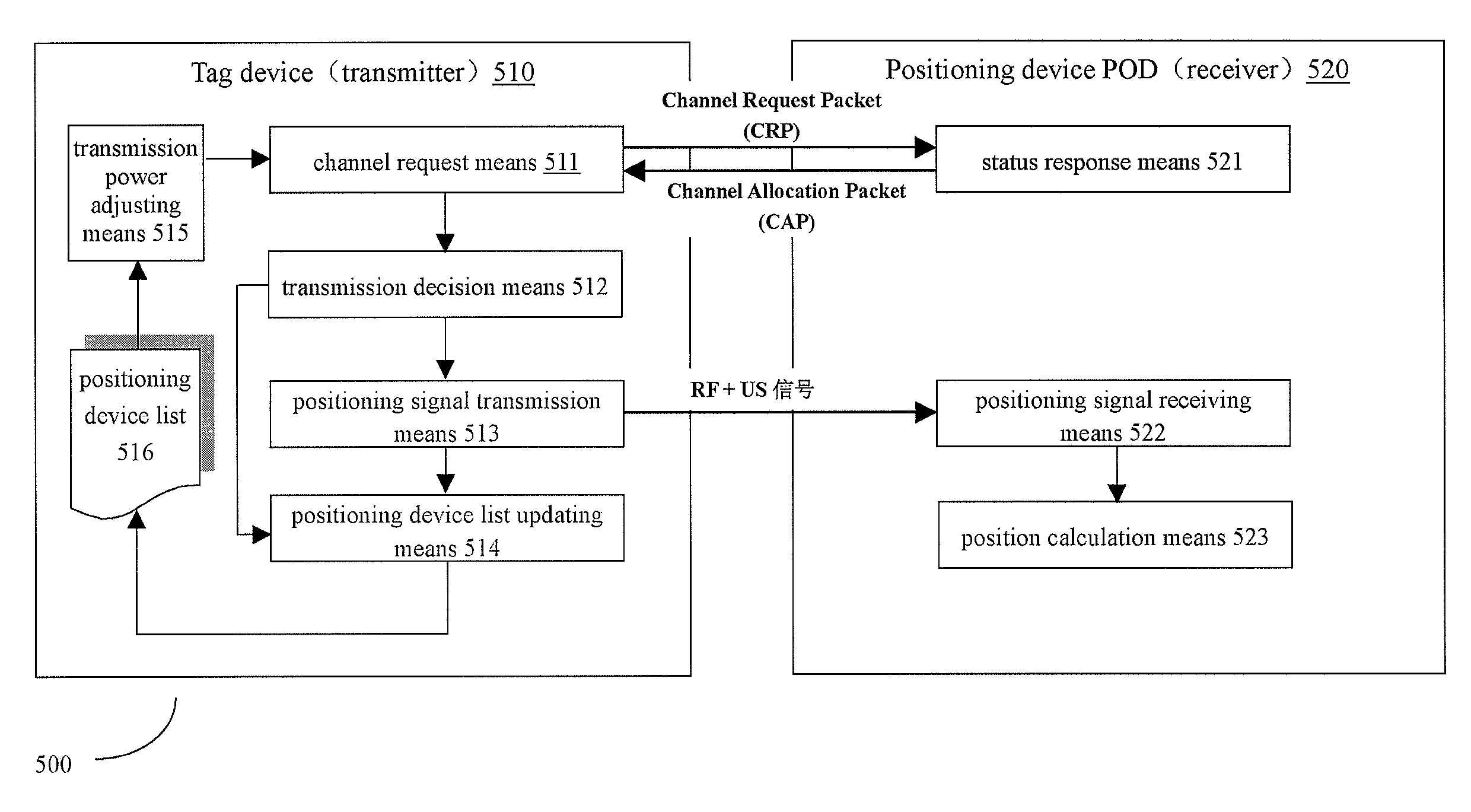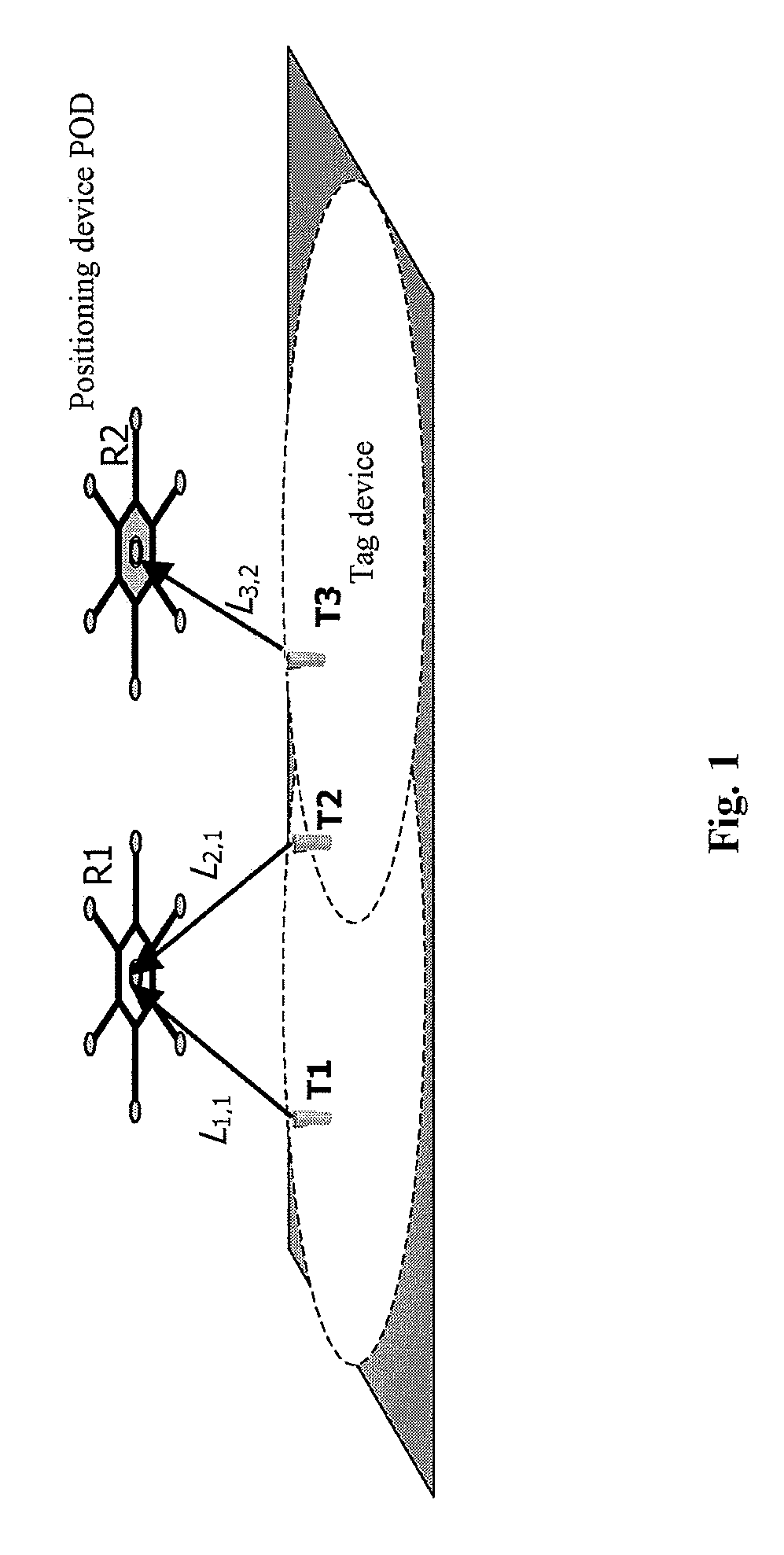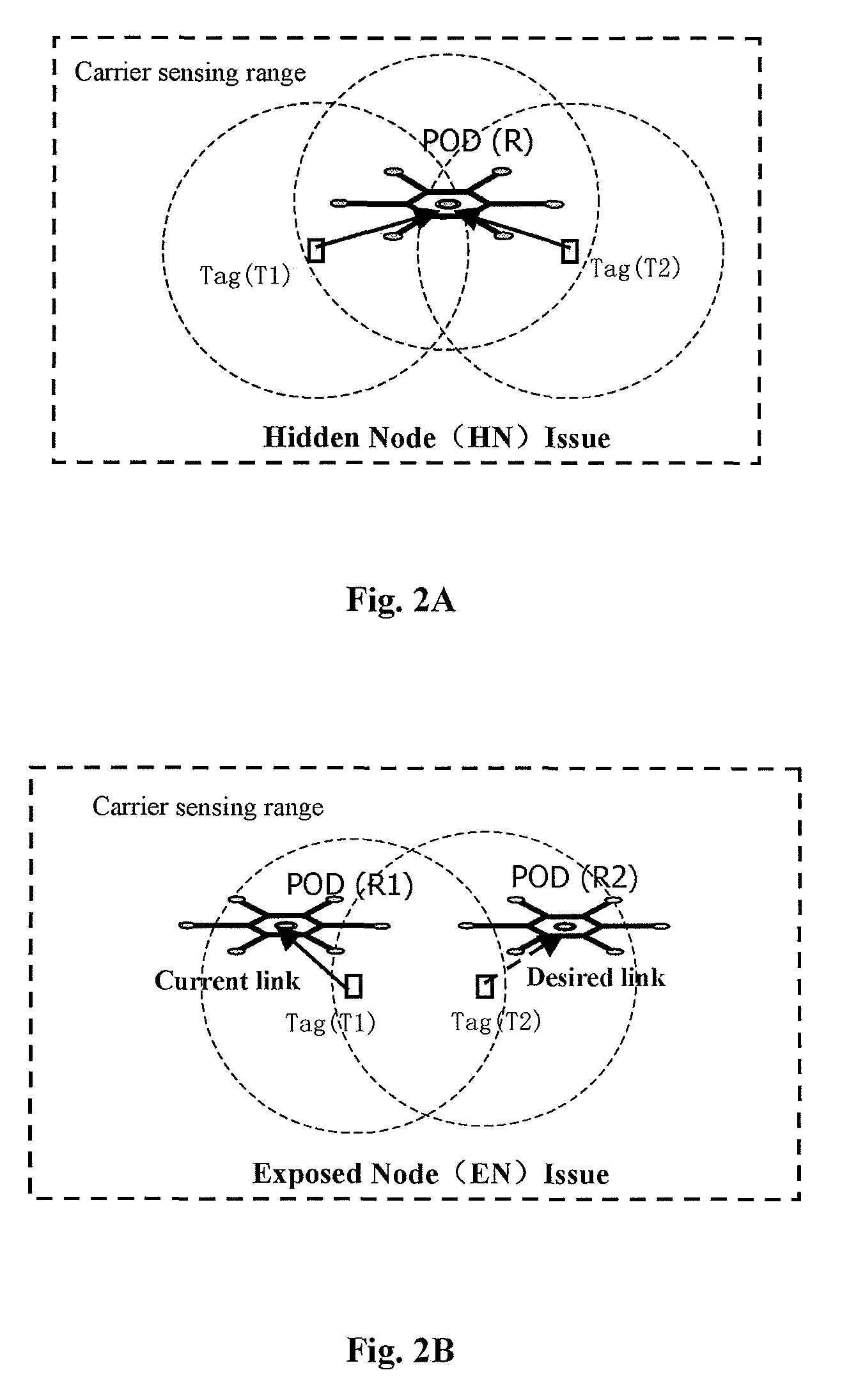Multi-objects positioning system and power-control based multiple access control method
a positioning system and multi-object technology, applied in power management, instruments, reradiation, etc., can solve the problems of signal collision, rf or ultrasound transmission, signal collision, etc., and achieve the effect of improving spatio-temporal reuse of wireless channels
- Summary
- Abstract
- Description
- Claims
- Application Information
AI Technical Summary
Benefits of technology
Problems solved by technology
Method used
Image
Examples
Embodiment Construction
[0044]FIG. 5 is a structural block diagram for showing a multi-objects positioning system 500 according to the present invention, which is capable of implementing power-control based multiple access control. For purpose of simplification of explanation, it is only shown in FIG. 5 interaction between one tag device (transmitter) 510 and one positioning device (receiver) 520. However, the system 500 can include more than one tag devices and positioning devices. Here, the positioning device 520 is for example a POD device. In the system 500, the tag device 510 is attached to a mobile object to be tracked, and each tag device can include RF transceiver and US transmitter (not shown). A plurality of PODs 520 are mounted in the monitoring environment (e.g. on the ceiling) for tracking and localizing multiple mobile objects in the environment. POD consists of a RF transceiver in the center and multiple US receivers spreading around (not shown).
[0045]As shown in FIG. 5, the tag device 510 c...
PUM
 Login to View More
Login to View More Abstract
Description
Claims
Application Information
 Login to View More
Login to View More - R&D
- Intellectual Property
- Life Sciences
- Materials
- Tech Scout
- Unparalleled Data Quality
- Higher Quality Content
- 60% Fewer Hallucinations
Browse by: Latest US Patents, China's latest patents, Technical Efficacy Thesaurus, Application Domain, Technology Topic, Popular Technical Reports.
© 2025 PatSnap. All rights reserved.Legal|Privacy policy|Modern Slavery Act Transparency Statement|Sitemap|About US| Contact US: help@patsnap.com



